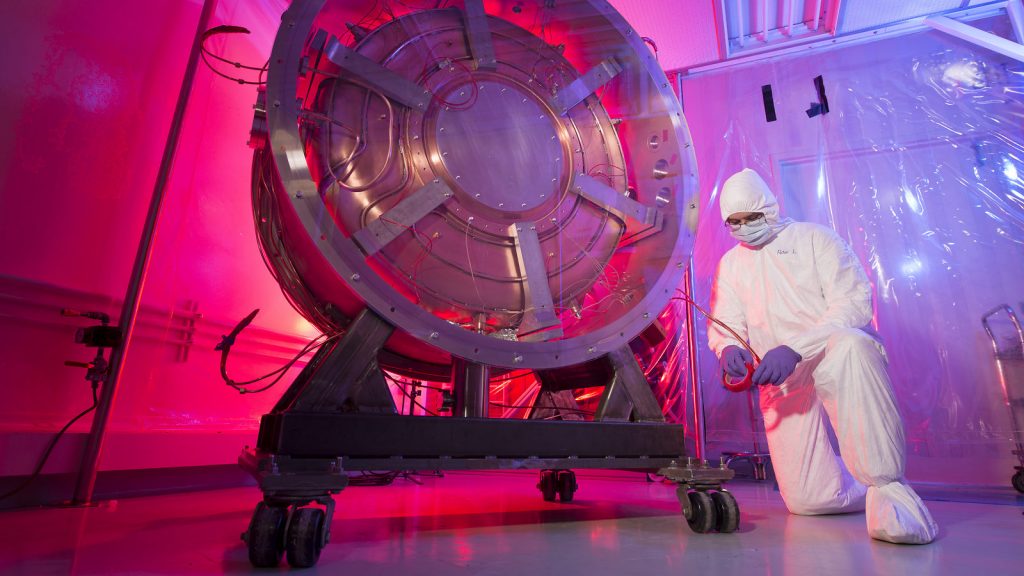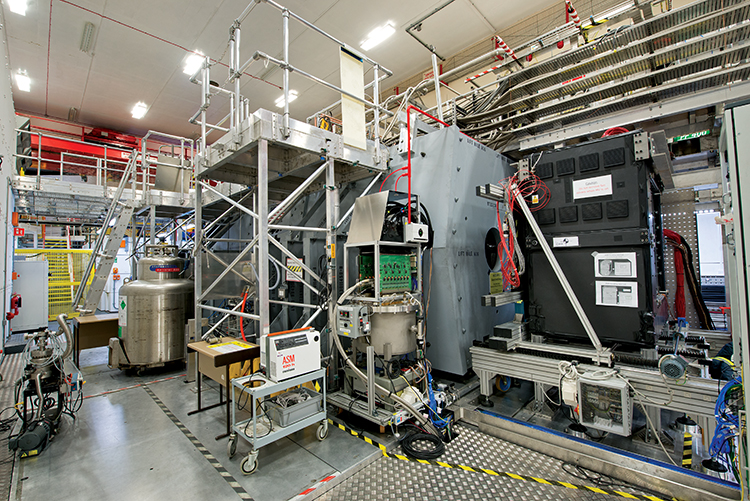
The acclaimed journal Nature has published groundbreaking results of an international experiment with muons involving researchers from the Institute of Physics, Belgrade. The paper titled Demonstration of cooling by the Muon Ionization Cooling Experiment published on 6 February 2020, has attracted the attention of media and science portals all over the world. This is the result of the experiment of the international collaboration MICE (Muon Ionization Cooling Experiment) which has demonstrated for the first time that it is possible to cool muons.
These negatively charged elementary particles, which are also called ‘heavy electrons’ in the slang, due to their mass which is about 200 times that of electrons, can be found in cosmic ray showers on Earth. It is precisely in the study of these cosmic ray showers that they were discovered in 1936 when the American physicists Carl Anderson and Seth Neddermeyer observed in the magnetic field hitherto unknown particles which, because of their mass, are placed between electrons and protons. The cooling of muons represents a particular challenge, taking into account their lifetime lasting only two-millionth of a second until they decay into an electron and two kinds of neutrinos.
Unlike muons, the use of beams of electrons, protons or ions has been widespread in all fields of physics, as well as in other scientific disciplines. In other words, conventional techniques of beam particles cooling could not be applied to muons until the international MICE collaboration did not undertake the task of designing a new method.
The paper, signed by researchers from several countries, also included Dr Dimitrije Maletić, Dr Dejan Joković and Dr Mihailo Savić from the Institute of Physics, Belgrade. From Serbia, in addition to them, Dr Jovana Nikolov and Dr Nikola Jovančević from the Department of Physics of the Faculty of Sciences in Novi Sad were also engaged in the experiment.
The team from the Institute was primarily involved in calculations, done at the Rutherford Appleton Laboratory in Britain, at the very core of the experiment, but they also carried out the parts of research realized in our facility in Zemun. Thus, in Serbia, they developed MICE software and supervised the reconstruction of experimental data in distributive systems, which is still being carried out.
The fundamental question until now has been whether it is possible to channel a sufficient number of muons in a small enough volume, in order to study physics in new systems. This experiment has developed a new method for their cooling which involves the passage of these particles through a specially designed material while focusing the beam by superconducting magnetic optics.
‘This game-changing breakthrough was achieved primarily thanks to the enthusiasm, dedication and hard work of researchers around the world,” stated Professor Ken Long of the Imperial College London, a spokesperson of the experiment.
The experiment originally consisted of six planned steps, but after the fourth, it was interrupted due to Brexit and being out of European funds which led to a change of plans. However, the analysis of obtained data continues, so new papers are expected to be published.
‘The technique which has yielded good results in this research can further be implemented in the experiments for the production of neutrinos, but also in those in which muons would collide similarly to electron and positron collisions carried out in LEP Accelerator, the predecessor of the Large Hadron Collider. Considering the mass of muons, these types of collision experiments will have around 50 billion times less energy loss in acceleration than in the case of electron collision and will be much less expensive’, explained Dr Dimitrije Maletić of the Institute of Physics, Belgrade. ‘In addition to this, a greater mass of muons provides a stronger entanglement with Higgs bosons, so it is expected that the production of the ‘God particle’ is even 50 times greater than during the collision of electrons and positrons’ added Dr Maletić.
MICE collaboration researchers feel that the success in ionization cooling of muons is a major step towards the construction of the most powerful accelerator which could replace LHC and provide a better understanding of elementary particles. Besides, muons can be used to study the atomic structure of materials, as well as fusion catalyst and to see through materials which X rays cannot penetrate.
The core of the experiment, also recognized by CERN, consists of the United Kingdom and the United States of America researchers, but their colleagues from other countries have also participated. The Institute’s involvement started in February 2015 when at the suggestion of Academician Đorđe Šijački, president of the Management Board and Dr Milorad Popović of Fermilab, a group of researchers from the Low-background Laboratory for Nuclear Physics was engaged.

The original paper in NATURE journal: Demonstration of cooling by the Muon Ionization Cooling Experiment
Photos: STFC MICE & Fermilab, US DOE




